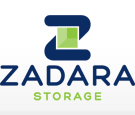 A Q&A with Zadara Storage co-founder and CEO Nelson Nahum. The Irvine, California–based company was founded in 2011 and raised $7 million in funding in mid-July. Investors include Genesis Capital Advisors and Platinum Management.
A Q&A with Zadara Storage co-founder and CEO Nelson Nahum. The Irvine, California–based company was founded in 2011 and raised $7 million in funding in mid-July. Investors include Genesis Capital Advisors and Platinum Management.
SUB: Please describe Zadara Storage, and the value proposition you offer to the enterprise.
Nahum: Zadara Storage allows enterprises to define Virtual Private Storage Arrays, in the public cloud. This is storage for the cloud servers to run applications inside the cloud. These storage arrays are similar to enterprise class SAN/NAS storage arrays but in the cloud—Amazon, Rackspace and Opsource for now. The customer gets full control of the storage, high availability, dedicated drives and all the storage features and performance of an on premise SAN/NAS storage, but with the elasticity and the economics of the cloud. Pay by hours of use. Use the cloud like it was their own datacenter.
SUB: Who are your target users?
Nahum: Enterprises and SaaS companies that want to run workloads in the cloud. Have the elasticity and the economics of the cloud, but also want to have the same reliability, performance and security of on premise storage arrays.
SUB: Who do you consider to be your competition?
Nahum: As of today, nobody offers this kind of storage in the cloud. The competition would be people that are not moving to the cloud and buy physical storage arrays or people in the cloud but using the storage offered by the cloud providers despite the heavy limitations.
SUB: What differentiates Zadara Storage from the competition?
Nahum: We are the only storage in the cloud that can offer each user the whole drives for himself, avoiding the noisy neighbors. We are the only storage that can be shared between multiple cloud servers to run things like Red Hat clustering or MS Clustering. We allow each customer to decide the type of drives he wants or the RAID protection levels. We are the only storage in the cloud that the user can encrypt the data and have the password for the encryption keys, so nobody, including people at the cloud provider, can see the data.
SUB: When was the company founded and what were the first steps you took in establishing it?
Nahum: Zadara Storage was founded in March 2011. We started with an amazing team of engineers that have under their belt many years of experience delivering enterprise storage products. We started architecting and developing the product that I had in mind. We created an environment that people can work from anywhere in the world and have the same access to the info., code, etc. We have people in the U.S., Israel and India working like they were all in the same place. We meet every day, we share documents, all is in the cloud.
SUB: What was the inspiration behind the idea for Zadara? Was there an ‘aha’ moment, or was the idea more gradual in developing?
Nahum: We had many years developing SAN and NAS storage arrays for the enterprise. When I started looking at what Amazon offers as a cloud, I saw that they have very good functionality in the VM management, EC2, the networking with VPCs and Virtual Gateways, but in storage, was nothing even close to an on-premise SAN/NAS array. So I thought, if I, as a customer, could have a SAN/NAS array for myself, but running in Amazon, that could be created in less than a minute with the elasticity and pay per usage like the EC2, this would be a great idea for a startup. And the team architected in a way that today, with Zadara a person can go to our console and define a SAN/NAS array in less than a minute and connect to the EC2 instances.
SUB: What have the most significant obstacles been so far to building the company?
Nahum: We are doing something completely new, and some people are skeptical. Others said that it is ‘too good to be true.’
There is no other company doing something similar that we can point or reference to. But overall, has been great. In the last couple of quarters we proved that the technology is rock solid, and the need and customer adoption is bigger than we thought.
SUB: You just raised $7 million in your first round of funding. Why was this a good time to raise this round, and how do you plan to use the new funds?
Nahum: We have great plans to become pioneers of a new generation of storage system not only for cloud providers but also for private clouds. This is a storage system that can be based on low cost x86 machines; that can scale to 1,000s of storage nodes; that can be multitenant, allowing each user to define the storage they want and avoiding one user to interfere with the other. A storage system that has all the metering needed so an IT division with a private cloud can charge back the business units.
We are heavily invested in R&D, nine out of our 12 people are engineers, top engineers. We released two months ago our service at Amazon, Rackspace and Opsource and we are investing in sales and marketing. In parallel we are in conversations with some big companies to create private storage clouds.
SUB: Do you plan to raise additional funds in the near future?
Nahum: Not in the immediate future, but it will really depend on our success, especially with the very big projects. If we succeed faster than we thought, we may want to raise money to replicate these big projects fast. We are currently focused in the U.S. market but we constantly get requests for our service in Europe, Asia and Latin America.
SUB: How does the company generate revenue or plan to generate revenue?
Nahum: Currently we generate revenue from our customers that sign up for our virtual storage arrays for Amazon, Rackspace or Opsource clouds. This is recurring revenue. We plan to quickly expand our customer base on those clouds. In addition we are also planning to license our software to some cloud providers for public and also private clouds.
SUB: What are your goals for Zadara over the next year or so?
Nahum: Our goal for the next year is to have a large amount of customers in the clouds where we offer the service, as well as to have signed a couple of deals where we provide the entire storage for a big public or private cloud. We would like to prove that this architecture of having 10s,100s or 1,000s of storage nodes and each customer define their own storage arrays in seconds, is the right one for cloud and for modern data centers that want to be managed like a cloud.
Zadara Storage – www.zadarastorage.com












